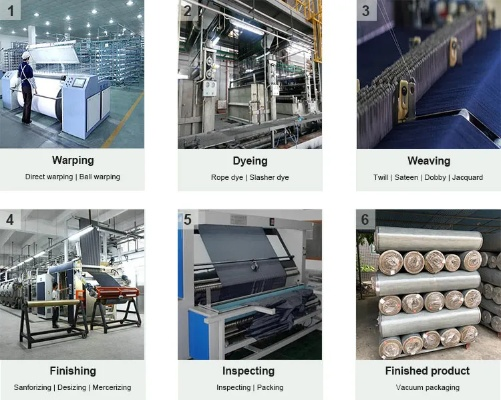Textile Heritage Preservation Standards for Moisture Control
: Textile Heritage Preservation Standards for Moisture Control,Abstract:,The preservation of textile heritage is crucial for the protection of cultural and historical significance. This paper proposes a set of standards for moisture control in the preservation of textile heritage, which includes the selection of appropriate materials, construction methods, and maintenance strategies to ensure the durability and longevity of textile artifacts. The standards emphasize the importance of moisture management during the preservation process, including the use of moisture-resistant materials, proper ventilation, and regular inspections to detect any signs of moisture damage. The implementation of these standards can help to prevent further degradation of textile heritage, ensuring that future generations can appreciate and learn from the rich history and cultural significance of these important artifacts.
Introduction: The preservation of textiles, which are an integral part of our cultural heritage, is crucial to maintaining their authenticity and historical relevance. However, moisture can be a significant threat to these delicate materials, leading to decay, discoloration, and even structural damage. This guide aims to provide a comprehensive understanding of the standards and best practices for preventing mold growth in textiles, ensuring their safekeeping for future generations.
Table of Contents:
- Understanding Moisture in Textiles
- Importance of Moisture Control
- Preventative Measures
- Handling and Storing Textiles
- Case Studies
- Future Trends and Challenges
- Conclusion
Understanding Moisture in Textiles: Textiles, whether they be clothing, rugs, or tapestries, are made from natural fibers such as cotton, wool, silk, and linen. These materials have inherent moisture-absorbing properties that enable them to regulate body temperature and feel comfortable against the skin. However, when exposed to excessive moisture, these fibers can become susceptible to mold growth, leading to irreversible damage and deterioration.
Importance of Moisture Control: Mold growth in textiles not only affects their aesthetic appeal but also poses health risks to those who come into contact with them. Mold spores can cause allergies, respiratory issues, and other health problems. Additionally, the loss of value and cultural significance associated with textiles cannot be replaced through restoration efforts. Therefore, it is imperative to control moisture levels in textiles to prevent these issues from occurring.

Preventative Measures: To maintain the integrity of textiles and prevent moisture-related damage, several preventative measures can be taken. These include:
- Proper storage conditions: Textiles should be stored in dry, well-ventilated areas away from direct sunlight and heat sources. The use of airtight containers or humidity-controlled storage facilities can further enhance the effectiveness of these measures.
- Proper cleaning techniques: When handling textiles, it is essential to use gentle, non-abrasive cleaning methods that do not damage the fibers. Avoid using harsh chemicals or abrasives that can strip away the fabric's protective coating.
- Regular maintenance: Regular inspections and maintenance of textiles can help identify any signs of moisture buildup or damage early on, allowing for prompt repairs or replacements.
- Education and awareness: Educating individuals about the importance of moisture control in textile preservation can lead to better practices in home environments and institutions alike.
Handling and Storing Textiles: When handling and storing textiles, it is crucial to follow specific guidelines to minimize moisture exposure. This includes:
- Proper handling techniques: Before cleaning or repairing textiles, it is important to remove any loose fibers or debris that may have accumulated on the surface. This can be done by gently brushing or vacuuming the area with a soft brush or cloth.
- Storage solutions: Textiles should be stored in a way that allows for air circulation, minimizing the risk of condensation or humidity buildup. This can be achieved by placing textiles in airtight containers or bags that allow for ventilation.
- Regular rotation: To ensure even distribution of moisture across the textile, it is recommended to rotate textiles regularly. This can be done by moving them from one area to another or by rotating them within a single storage container.
Case Studies: One example of successful moisture control in textile preservation is the restoration of a centuries-old tapestry in England. The tapestry was found to have extensive mold growth due to poor storage conditions. By following the principles outlined above, the restorer successfully removed the mold without damaging the original fibers. The resulting tapestry now stands as a testament to the power of proper moisture control practices.
Future Trends and Challenges: As technology advances and climate change continues to impact global temperatures, there will be new challenges in preserving textiles. For instance, increased humidity levels and changing weather patterns could lead to more frequent instances of mold growth in textiles. Additionally, the demand for sustainable and eco-friendly preservation methods will continue to grow as consumers seek out authentic and ethically sourced products.
Conclusion: In conclusion, controlling moisture levels in textiles is critical for their preservation and longevity. By following best practices for storage, cleaning, and maintenance, we can ensure that these priceless cultural treasures remain intact for generations to come. As we navigate the challenges presented by climate change and technological advancements, it is up to us to continue investing in innovative solutions that prioritize the preservation of our textile heritage.
纺织品文物作为历史文化的珍贵载体,其防霉处理至关重要,为了确保文物的保存和延长其使用寿命,制定纺织品文物防霉处理规范显得尤为必要,本篇旨在介绍纺织品文物防霉处理的基本原则、流程和方法,并通过案例分析进一步说明其实际应用。
纺织品文物防霉处理基本原则
- 保护文物不受霉菌侵害:防霉处理的首要目标是确保纺织品文物免受霉菌的侵害,保持其历史价值与完整性。
- 遵循科学原理:在防霉处理过程中,应遵循相关科学原理,确保处理效果持久且环保。
- 符合行业标准:遵循国家和行业的相关防霉处理规范,确保处理过程符合法规要求。
纺织品文物防霉处理流程
-
前期准备:对文物进行评估,确定防霉处理需求。

- 了解文物的材质、使用情况和霉菌生长情况。
- 制定详细的防霉处理方案。
-
表面处理:使用适当的防霉处理方法对文物表面进行处理。
- 清洁文物表面,去除污渍和杂质。
- 选择合适的防霉剂或涂料,均匀涂刷或喷涂在文物表面。
- 根据需要,可进行特殊处理,如涂层加固、抗紫外线处理等。
-
固化与测试:对处理后的文物进行固化处理,并进行相关测试。
- 根据文物的材质和防霉剂的性能,选择合适的固化时间。
- 对处理后的文物进行外观检查、性能测试等。
- 根据测试结果调整和处理方案,确保达到预期效果。
纺织品文物防霉处理的案例分析
某博物馆纺织品文物的防霉处理
某博物馆收藏了一批珍贵的纺织品文物,其中涉及丝绸、棉布等材质,为了确保文物的保存和延长其使用寿命,该博物馆采取了以下防霉处理方法:
- 前期准备:对该批纺织品文物进行评估,确定其材质和霉菌生长情况。
- 表面处理:使用专业的防霉剂对文物表面进行处理,确保表面清洁且无残留污渍,为防止霉菌滋生,还采取了特殊的涂层加固措施。
- 固化与测试:经过一段时间的固化处理后,文物外观完好无损,性能测试结果显示达到了预期效果,该博物馆表示,通过科学合理的防霉处理,有效延长了文物的使用寿命。
纺织品文物的特殊处理案例
某艺术品展销中心展示了一批具有特殊工艺的纺织品文物,如织锦、刺绣等,为确保这些文物的保存和延长其使用寿命,采取了以下特殊处理方法:
- 评估文物材质和工艺特点:根据文物的材质和工艺特点,选择合适的防霉剂和涂料。
- 特殊涂层加固处理:在文物的表面涂刷或喷涂一层特殊的涂层加固材料,以增强文物的防水、防潮性能,还考虑到了文物的历史传承性和美观性。
- 案例效果展示:经过一段时间的使用和保养,该特殊处理的纺织品文物依然保持了良好的外观和性能,得到了收藏家和观众的广泛好评。
纺织品文物防霉处理的注意事项
- 选择合适的防霉剂和涂料:根据文物的材质、使用情况和霉菌生长情况选择合适的防霉剂和涂料,要确保所选的防霉剂环保、无害。
- 注意操作安全:在防霉处理过程中,要注意操作安全,避免对人体和环境造成伤害,要遵循相关安全规范和操作流程。
- 注意维护保养:在完成防霉处理后,要注意维护保养工作,定期检查文物的状态和使用情况,及时发现问题并进行处理。
纺织品文物防霉处理是保护文物免受霉菌侵害、延长其使用寿命的重要措施,通过遵循基本原则、流程和方法以及案例分析,我们可以更好地了解纺织品文物防霉处理的实际情况和应用效果,在实际操作中,还需注意选择合适的防霉剂和涂料、注意操作安全、注意维护保养等方面的问题。
Articles related to the knowledge points of this article:
The Maximum Density of Textiles
The Inspiration Canvas:A Comprehensive Guide to Textile Design



